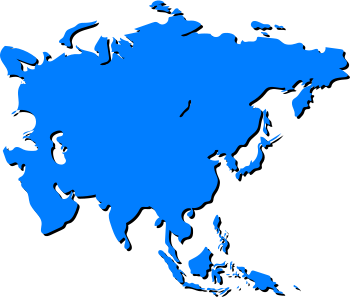Every month, 100,000 readers use the Dinosaur Database, but we receive no support from you. Developing and updating the database requires a lot of work. If you want it to remain open and be updated, please support us via the "Buy us a coffee" button available on every page or via the Support page.
Dinosaur: Mamenchisaurus sanjiangensis

| Length*: | 25 m | 82.0 ft |
| Weight*: | 20 t | 44,092 lb |
*The largest known specimen
Period
Epoch: Late Jurassic
Stage: Oxfordian-Tithonian
Years: 161.5–145 Ma
Details
Status: valid
Author: Dai et al.
Year: 2025
Distribution
Area: Asia
Country: China
Region: Sichuan
Formation: Upper Shaximiao
Description
Mamenchisaurus sanjiangensis
Mamenchisaurus sanjiangensis is a newly described mamenchisaurid sauropod dinosaur from the Upper Jurassic of Southwest China, discovered in the Sanjiang area. Known from a partial skeleton, this taxon enriches the diversity of Mamenchisauridae and provides new insights into the evolution of East Asian eusauropods. As the eighth species in the genus, it shares close phylogenetic ties with other Mamenchisaurus species but diverges in certain vertebral and limb features, highlighting regional adaptations in Late Jurassic floodplains. Estimated at 20–25 m (66–82 ft) long and 15–20 t (33,069–44,092 lb) heavy, it exemplifies the long-necked giants that dominated Asian ecosystems during the Oxfordian to Tithonian stages.
Etymology
The specific epithet sanjiangensis refers to the Sanjiang region in Southwest China where the holotype was discovered, meaning “three rivers” in Chinese, likely alluding to the confluence of major waterways in the locality.
Physical Characteristics
Mamenchisaurus sanjiangensis was a large, long-necked quadruped with a body plan typical of mamenchisaurids—optimized for reaching high vegetation in forested river valleys. The holotype consists of a partial skeleton including vertebrae, ribs, limbs, and pelvic elements, preserving key diagnostic features that distinguish it from relatives like M. sinocanadorum and M. youngi.
The neck was extremely elongated, with at least 17–19 cervical vertebrae (characteristic of the genus), each centrum low and long with bifurcated neural spines in the anterior series. This structure allowed for a neck length up to half the total body, enabling access to tall conifers or cycads. The skull, though not preserved, is inferred to be small and lightweight based on genus traits, with peg-like teeth for stripping foliage.
The trunk was robust with dorsal vertebrae featuring tall neural spines for muscle attachment, supporting a deep chest and broad belly. The tail was long and tapering, counterbalancing the neck. Limbs were pillar-like, with the forelimbs shorter than the hindlimbs, giving a slightly sloping posture. The humerus and femur show robust shafts with expanded ends, indicating weight-bearing adaptations.
Body size for the holotype is estimated at 20–25 m (66–82 ft) long, based on vertebral proportions scaled against complete Mamenchisaurus skeletons. Mass ranges from 15–20 t (33,069–44,092 lb), reflecting a lighter build than contemporaneous titanosaurs but heavier than earlier mamenchisaurids. These figures position M. sanjiangensis as a mid-sized member of the genus, with potential for larger adults.
Diet and Feeding Habits
Herbivore; Mamenchisaurus sanjiangensis browsed high vegetation such as conifers and ferns using its extreme neck reach and peg-like teeth for raking leaves; inferred from genus-wide adaptations in Mamenchisauridae.
Habitat and Distribution
Asia, China, Southwest China (Sanjiang region), Upper Jurassic formation (likely Qigu or Suining Formation equivalent).
Paleoenvironment
Fluvial-lacustrine deposits with rivers and forests in a humid subtropical climate; co-occurring taxa include other mamenchisaurids, stegosaurians, and theropods.
Behavior and Social Structure
Inferred from clade: gregarious herding for protection; long neck for foraging without moving body much; slow-moving due to size but safe from predators via length.
Discovery and Research
Holotype partial skeleton collected from Upper Jurassic Sanjiang site; described in 2025. Phylogenetic analyses recover it as a diverged mamenchisaurid closely related to M. sinocanadorum; provides new evidence on eusauropod diversity and biogeography in East Asia.
Discovery Context
Excavated from ~150 Ma fluvial sediments; part of ongoing explorations in Southwest China’s Jurassic basins.
Significance and Interesting Facts
- Eighth species in Mamenchisaurus, enriching genus diversity with unique vertebral traits.
- Reveals new evolutionary patterns in East Asian eusauropods, including regional endemism.
- One of the longest-necked dinosaurs, with neck potentially 10–12 m (33–39 ft).
- Contributes to understanding Jurassic sauropod radiation in Asia.
- Locality in Sanjiang highlights untapped potential in Southwest China basins.
- Name reflects “three rivers” geography of discovery area.
Conclusion
Mamenchisaurus sanjiangensis adds a new chapter to the story of long-necked sauropods, showcasing evolutionary innovations in East Asia’s Jurassic landscapes. Its partial skeleton offers fresh insights into mamenchisaurid anatomy and phylogeny, underscoring the group’s success as high-browsers. As a large herbivore in a dynamic ecosystem, this taxon illuminates the diversity of Asian sauropods, bridging gaps in our understanding of eusauropod evolution before the Cretaceous.
Locations
Sources
Material: Partial skeleton (vertebrae, ribs, limbs, pelvis; holotype).
References: Dai H., Hu X., Tan C., Ren X.-X., Ma Q.-Y., Wei G.-B., You H.-L. 2025. A new mamenchisaurid sauropod dinosaur from the upper jurassic of Southwest China reveals new evolutionary evidence from East Asian eusauropods. Scientific Reports.




